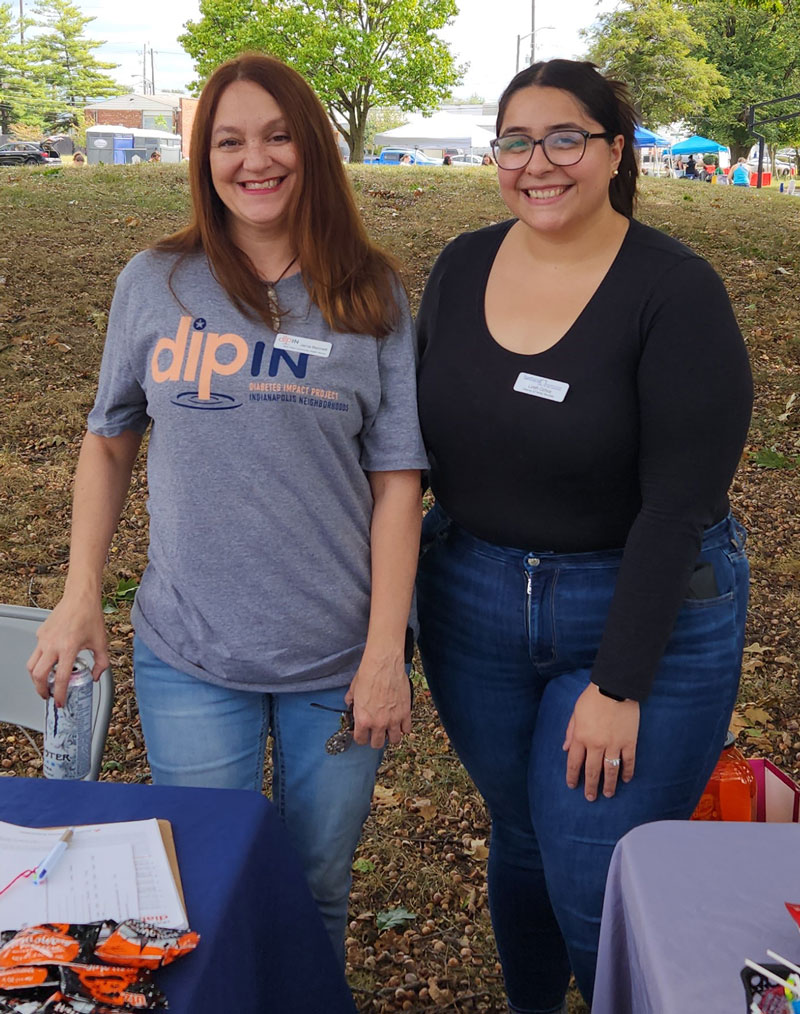While community health workers (CHWs) have been in local communities for decades and are now quite prevalent throughout the United States, DIP-IN is unique in that we have two types of CHWs as part of our project that target different levels of diabetes prevention and control, as well as overall quality of life.
We receive questions semi-frequently about the difference between the clinical and neighborhood CHWs. In simplest terms, DIP-IN’s clinical CHWs are employed by Eskenazi Health and work with patients in the three DIP-IN communities who already have diabetes and need assistance with diabetes control. DIP-IN Eskenazi CHWs also assist with any social needs that need addressing.
DIP-IN neighborhood CHWs are located at three local community organizations (Hawthorne Community Center, Flanner House, Avondale Meadows YMCA) in the three DIP-IN areas and work to identify people who may not know they have diabetes or pre-diabetes and make them aware of diabetes risk.
We frequently say that DIP-IN neighborhood CHWs are simply “meeting the residents where they are in the community.” This means that they are attending neighborhood association meetings or community cleanups, or hanging out at local community gathering spots. One of their main goals is to be present and see what the needs of the residents are, while also building a network of community resources for residents and organizations.
Both of our CHW teams work together to improve the quality of life of our DIP-IN residents. Below, we asked one of our DIP-IN neighborhood CHWs, Jama Bennett from Hawthorne Community Center, to describe her background that led her to becoming a community health worker and what kinds of activities she does that are essential to her role as a neighborhood CHW.
What about your background and/or education brought you to community work?
My educational background led me to obtain a bachelor’s degree in social work. I have worked in varying areas of social work; however, community work has always been an area I am passionate about. It’s about creating positive changes, connections, and developments in neighborhoods that need and deserve to have access to better quality of life.
My care for communities sparked me to seek a graduate degree in public leadership with a focus on communities and public health. Through DIP-IN, I get to witness community enhancement in the neighborhood I live and work in, which is magical to me. A true blessing.
What kinds of health-focused activities do you do?
I attend yoga, also called mindful movement, walking, gardening, canoeing, alongside other residents. I also attend wellness classes with Centers of Wellness for Urban Women (CWUW) that we are beginning to coordinate in places throughout the Near West. I complete American Diabetes Association (ADA) risk assessments, make referrals, and provide community resources and DIP-IN resources. Finally, I’m excited that plans are being worked out to start a Zumba class at Hawthorne this spring for the residents.
What kinds of community-focused activities do you do?
My health-focused activities are very intertwined with community activities. Again, I attend community yoga at Christamore House, volunteer at food pantries, participate and help coordinate neighborhood cleanups, and attend events to connect with residents. I also connect with individuals one on one to provide support. I engage with community partners and neighborhood associations by supporting their events, and assist with seeking out potential DIP-IN project proposals.


